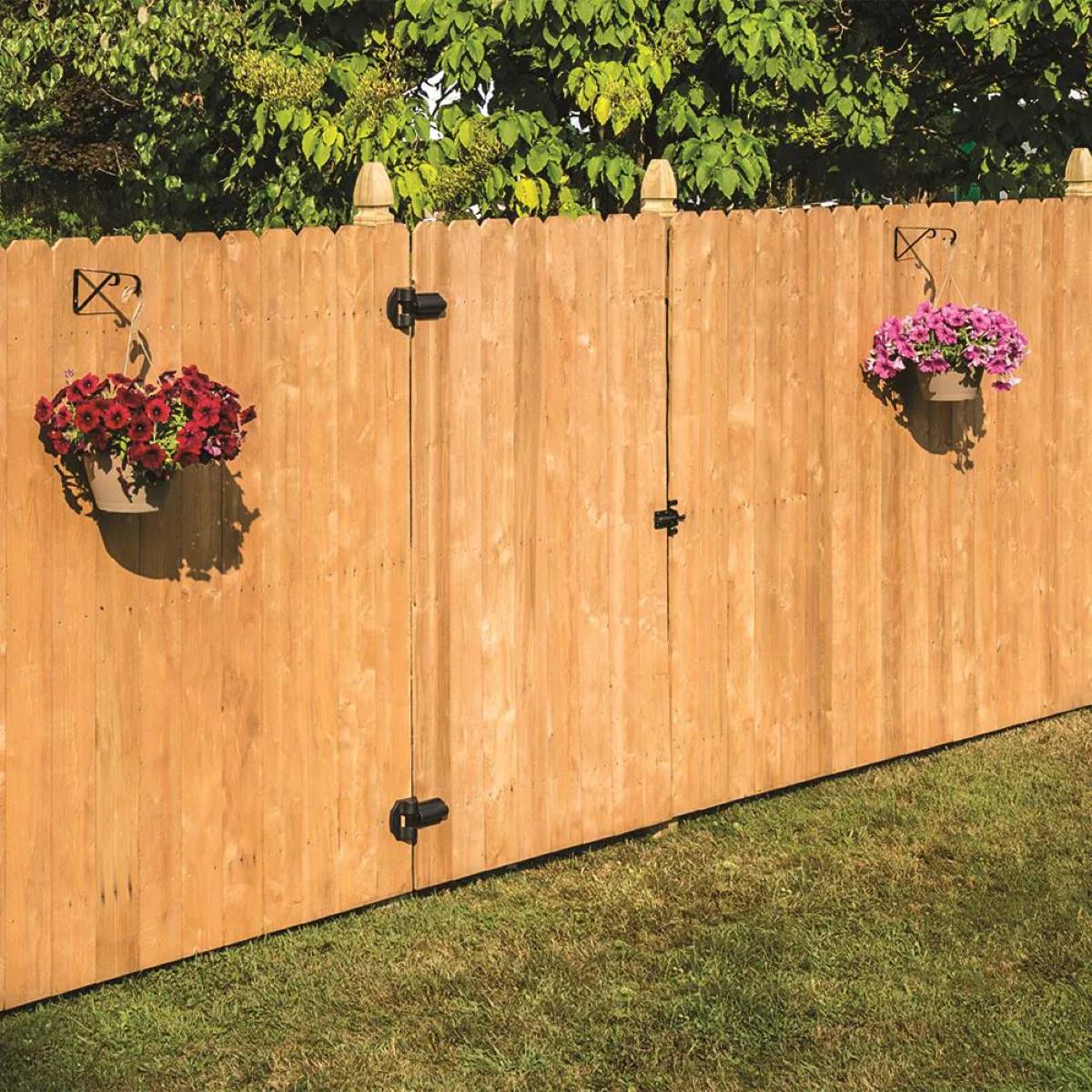

Articles
What Is A Dog Ear Fence
Modified: October 20, 2024
Discover the benefits and characteristics of a dog ear fence with our comprehensive articles. Learn how to choose, install, and maintain this popular fencing option.
(Many of the links in this article redirect to a specific reviewed product. Your purchase of these products through affiliate links helps to generate commission for Storables.com, at no extra cost. Learn more)
Introduction
A dog ear fence is a popular type of fence commonly used in residential and commercial properties. It is named after the distinctive shape of the fence boards, which resemble the ear of a dog when viewed from the side. The dog ear fence offers both practical and aesthetic benefits, making it a preferred choice for many homeowners and business owners.
In this article, we will explore the definition, purpose, characteristics, materials, installation process, benefits, maintenance, cost considerations, and a comparison of a dog ear fence with other fence types. Whether you are considering installing a new fence or looking to replace an existing one, this article will provide you with valuable insights to help you make an informed decision.
Key Takeaways:
- Dog ear fences are versatile, offering privacy, security, and aesthetic appeal. They can be made from wood or vinyl, providing options for durability, maintenance, and cost considerations. Proper installation and maintenance are essential for maximizing the benefits of a dog ear fence.
- When choosing a dog ear fence, consider its distinct characteristics, such as notched pickets, solid construction, and natural beauty. Compare it with other fence types to determine the best fit for your property based on privacy, maintenance, and cost factors.
Read more: What Fence Is Best For Dogs
Definition of a Dog Ear Fence
A dog ear fence refers to a type of wooden fence that features pickets with a distinctive notched shape resembling the floppy ears of a dog. The term “dog ear” comes from the fact that the top corners of the pickets are cut at an angle, creating a sloping appearance.
This style of fence is typically constructed using vertical pickets nailed or screwed onto horizontal rails, providing security and privacy to the enclosed area. The height of the pickets can vary depending on the desired level of privacy or aesthetic preference.
One of the defining features of a dog ear fence is the absence of decorative finials or ornamental designs commonly found in other fence styles. This simplicity gives the fence a clean and minimalist look, allowing it to blend seamlessly with various architectural styles and landscapes.
A dog ear fence can be built using a variety of wood materials, such as cedar or pressure-treated pine, which are known for their durability and resistance to rot and decay. The natural characteristics of the wood, such as grain patterns and knots, add to the rustic charm and visual appeal of the fence.
Overall, a dog ear fence offers a classic and timeless design that complements both traditional and contemporary exteriors. It is a versatile option that can be customized to fit various property sizes and layouts. Whether used for residential or commercial purposes, a dog ear fence provides a functional and attractive enclosure.
Purpose of a Dog Ear Fence
A dog ear fence serves multiple purposes, making it a popular choice for homeowners and property owners. Let’s explore the key purposes of this type of fence:
1. Privacy:
One of the primary reasons people install a dog ear fence is to create a private and secure space. The height of the fence pickets, combined with the lack of gaps or spaces between them, ensures that your property is shielded from prying eyes. This privacy feature is especially beneficial for those who have pools, gardens, or outdoor living areas where they want to enjoy privacy and seclusion.
2. Security:
A dog ear fence acts as a physical barrier, preventing unauthorized access to your property. The solid construction and absence of footholds make it difficult for intruders to climb over. By providing a sense of security, this type of fence can help deter trespassers and protect your home or business premises.
3. Aesthetics:
Not only does a dog ear fence serve functional purposes, but it also enhances the overall aesthetics of your property. The clean and simple design of the fence adds a touch of elegance and sophistication. It can complement a variety of architectural styles, from traditional to modern, and blends harmoniously with different landscape features.
4. Boundary and Marking:
A dog ear fence clearly defines the boundaries of your property, distinguishing it from neighboring properties or public areas. This is particularly useful in residential communities or areas with shared spaces. The fence acts as a clear marker, preventing any confusion or disputes regarding property lines.
5. Noise Reduction:
Another benefit of a dog ear fence is its ability to mitigate noise pollution. The solid construction of the fence helps to buffer and absorb sound, reducing external noise levels from traffic, neighbors, or other sources. This can create a peaceful and tranquil environment within your property.
In summary, the purpose of a dog ear fence is to provide privacy, security, aesthetics, property delineation, and noise reduction. It offers a combination of functionality and visual appeal, making it a versatile and popular choice for both residential and commercial properties.
Characteristics of a Dog Ear Fence
A dog ear fence is known for its distinct characteristics, which contribute to its popularity among property owners. Let’s explore the key features and characteristics of this type of fence:
1. Notched Pickets:
The most noticeable characteristic of a dog ear fence is its pickets with notched or angled tops. These notches resemble the shape of a dog’s ear and give the fence its name. The notched design adds visual interest and uniqueness to the fence, setting it apart from other fence styles.
2. Solid Construction:
A dog ear fence is typically built using solid wood materials, such as cedar or pressure-treated pine. The pickets are vertically aligned and attached to horizontal rails, creating a sturdy and durable structure. This solid construction provides strength and stability to the fence, ensuring its longevity.
3. Minimalist Design:
In contrast to ornate or decorative fences, a dog ear fence features a minimalist design. It forgoes intricate details or finials in favor of a clean and straightforward appearance. This simplicity allows the fence to blend seamlessly with various architectural styles and landscapes.
4. Natural Beauty:
The use of wood materials in a dog ear fence adds to its natural and rustic charm. The grain patterns, knots, and texture of the wood create a warm and inviting aesthetic. Over time, the wood may weather to a beautiful gray or silver hue, adding character to the fence.
5. Customizable Height:
A dog ear fence can be customized to different heights based on individual needs and preferences. The height of the pickets determines the level of privacy and security provided by the fence. Whether you want a low picket fence for decorative purposes or a taller one for enhanced privacy, the height can be adjusted accordingly.
6. Weather Resistance:
The choice of wood materials, such as cedar or pressure-treated pine, ensures that a dog ear fence is resistant to rot and decay. These types of wood have natural properties that make them well-suited for outdoor use. With proper maintenance, a dog ear fence can withstand various weather conditions and remain in good condition for years.
In summary, the characteristics of a dog ear fence include notched pickets, solid construction, minimalist design, natural beauty, customizable height, and weather resistance. These features combine to create an attractive, durable, and functional fence that adds value to any property.
Materials Used in a Dog Ear Fence
A dog ear fence can be constructed using various materials, but the most commonly used ones are wood and vinyl. The choice of material depends on factors such as budget, desired aesthetics, and maintenance requirements. Let’s explore the materials used in a dog ear fence:
1. Wood:
Wood is the traditional and most popular material for building a dog ear fence. There are different types of wood that can be used, including cedar, pressure-treated pine, spruce, or redwood. These wood species are known for their durability, natural beauty, and resistance to rot and decay. Wood fences provide a warm and classic look that complements a wide range of architectural styles. However, wood fences may require regular maintenance such as staining or sealing to protect against weathering.
2. Vinyl:
Vinyl is another material commonly used in constructing dog ear fences. Vinyl fences are made from a type of plastic known as polyvinyl chloride (PVC), which is durable, low-maintenance, and resistant to rot, termites, and weather damage. Vinyl fences come in various colors and styles, including ones that mimic the look of wood. They can be a great option for those who prefer a fence that requires minimal upkeep and has a longer lifespan than wood.
3. Metal Posts and Hardware:
In addition to the main fence material, dog ear fences often require metal posts and hardware for stability and durability. Galvanized steel or aluminum posts are commonly used to provide structural support and prevent the fence from sagging or leaning over time. The choice of hardware such as screws, brackets, and nails will also depend on the material of the fence and the specific installation requirements.
4. Fasteners:
When constructing a dog ear fence, it is important to choose the right type of fasteners to secure the pickets to the rails and posts. Common fastener options include nails, screws, or specialized fence clips. Stainless steel or galvanized fasteners are recommended to prevent rust and corrosion, ensuring the longevity and structural integrity of the fence.
In summary, the materials used in a dog ear fence include wood, specifically cedar, pressure-treated pine, spruce, or redwood, and vinyl. Each material has its own characteristics, advantages, and maintenance requirements. Consider your budget, desired aesthetics, and long-term maintenance commitment when choosing the material for your dog ear fence.
Read more: What Is The Ideal Fence Height For Dogs
Installation Process of a Dog Ear Fence
The installation of a dog ear fence involves several steps to ensure a sturdy and visually appealing result. While the specific process may vary depending on factors such as the terrain and materials used, here is a general overview of the installation process:
1. Planning and Preparation:
Start by measuring the perimeter of the area where the fence will be installed. Determine the number of fence panels and posts needed based on the desired height and spacing. Obtain any necessary permits or permissions from local authorities if required. Clear the area of any vegetation, rocks, or debris that may obstruct the fence installation.
2. Marking the Fence Layout:
Use stakes and string to mark the location of the fence line. Ensure the line is straight and follows the property boundaries. Mark the spots where the fence posts will be installed, typically spaced 6 to 8 feet apart. Clearly mark the corners and any gates that will be part of the fence design.
3. Digging Post Holes:
Begin by digging post holes using a post hole digger or an auger. The depth and width of the holes will depend on the type of soil and the height of the fence. As a general guideline, the holes should be approximately one-third the height of the fence post. Ensure the post holes are evenly spaced along the marked fence line.
4. Installing Fence Posts:
Place the fence posts into the prepared holes. Ensure they are level and properly aligned with the marked fence line. Use a spirit level to check the vertical alignment of the posts. Backfill the holes with concrete or gravel mix, tamping it down firmly to secure the posts in place. Allow the concrete to cure according to the manufacturer’s instructions.
5. Attaching Rails and Pickets:
Once the fence posts are secure, attach horizontal rails to each post. These rails provide the framework for the fence panels. Depending on your design, attach the rails using screws, brackets, or specialized hardware. Next, attach the dog ear pickets to the rails, ensuring they are evenly spaced and level. Use nails or screws to secure the pickets to the rails while leaving a small gap between each picket for expansion and contraction.
6. Adding Finishing Touches:
After all the fence panels are installed, trim any excess picket length to create an even and uniform appearance. If desired, apply a protective finish or stain to enhance the durability and aesthetic appeal of the fence. Install any gate hardware, such as hinges and latches, following the manufacturer’s instructions.
In summary, the installation process of a dog ear fence involves planning and preparation, marking the fence layout, digging post holes, installing fence posts, attaching rails and pickets, and adding finishing touches. It is recommended to consult with a professional or refer to specific installation guidelines based on the materials and design of the fence being installed.
When installing a dog ear fence, make sure to set the posts deep enough to provide stability and use pressure-treated wood for durability. Regular maintenance, such as staining or sealing, will help prolong the life of the fence.
Benefits of a Dog Ear Fence
A dog ear fence offers numerous benefits that make it a popular choice among homeowners and property owners. Let’s explore some of the key advantages of installing a dog ear fence:
1. Privacy and Security:
One of the primary benefits of a dog ear fence is the privacy and security it provides. The solid construction and lack of gaps between the pickets make it difficult for others to see inside your property. This added privacy creates a sense of seclusion and peace of mind. Moreover, the fence acts as a physical barrier, deterring intruders and enhancing the security of your home or business.
2. Versatile Design:
A dog ear fence features a clean and simple design that complements various architectural styles and landscape settings. It can be customized in terms of height, picket spacing, and color to match your preferences and needs. Whether you have a traditional, modern, or rustic property, a dog ear fence can enhance its overall aesthetic appeal.
3. Durability and Longevity:
When constructed with quality materials like cedar or pressure-treated pine, a dog ear fence offers exceptional durability and longevity. These materials are resistant to rot, decay, and insect damage. With proper maintenance and care, a dog ear fence can withstand the elements and retain its structural integrity for many years.
4. Cost-Effective:
Compared to some other fence styles, a dog ear fence is a cost-effective option. The materials required for construction, such as wood or vinyl, are typically more affordable compared to ornate or specialized options. Additionally, the straightforward design and installation process of a dog ear fence can help reduce labor and installation costs.
5. Easy Maintenance:
Maintaining a dog ear fence is relatively simple. Wood fences may require occasional staining or sealing to protect against weathering and maintain their appearance. Vinyl fences, on the other hand, require minimal maintenance, as they do not require staining or painting. Regular cleaning and occasional inspections are generally all that is needed to keep a dog ear fence looking its best.
6. Enhanced Property Value:
Installing a dog ear fence not only enhances the visual appeal of your property but can also increase its value. A well-maintained and aesthetically pleasing fence can boost curb appeal and make your property more attractive to potential buyers. It adds a touch of elegance and enhances the overall charm of your outdoor space.
In summary, the benefits of a dog ear fence include privacy and security, versatile design, durability and longevity, cost-effectiveness, easy maintenance, and enhanced property value. Consider these advantages when deciding on the type of fence to install on your property.
Maintenance of a Dog Ear Fence
Maintaining a dog ear fence is important to ensure its longevity, appearance, and functionality. With proper care and regular maintenance, you can keep your fence looking its best for years to come. Here are some maintenance tips for a dog ear fence:
1. Inspect Regularly:
Perform routine inspections of your dog ear fence to identify any damage, loose pickets, or signs of wear. Check for any loose or damaged fasteners and make sure the fence is securely attached to the posts. If you notice any issues, address them promptly to prevent further damage and maintain the fence’s structural integrity.
2. Cleaning:
Keep your dog ear fence clean by removing dirt, debris, and debris build-up periodically. Use a soft brush or sponge and mild soap or detergent mixed with water to gently scrub the fence. Rinse thoroughly with a hose to remove any soap residue. Avoid using harsh chemicals or abrasive materials that could damage the wood or vinyl surface.
3. Staining or Sealing:
If your dog ear fence is made of wood, it is recommended to stain or seal it to protect it against weathering and prolong its lifespan. Apply a high-quality wood stain or sealant to all exposed surfaces, including the pickets and rails, following the manufacturer’s instructions. This will help prevent moisture absorption, UV damage, and wood discoloration.
4. Repairing Damage:
Address any damage to your dog ear fence promptly to prevent it from worsening. Replace any broken or damaged pickets, rails, or posts as soon as possible. Check for signs of rot, insect infestation, or warping, and consult a professional if extensive repairs are needed. Regularly maintain and repaint or reseal any repaired areas to maintain a consistent appearance.
5. Vegetation Control:
Keep vegetation, such as vines or bushes, trimmed and away from your fence. Overgrown plants can put pressure on the fence, potentially causing it to warp or become damaged. Additionally, plants and leaves can hold moisture against the fence, leading to premature decay. Regularly trim vegetation near the fence to prevent such issues.
6. Winter Protection:
If you live in an area with harsh winter conditions, take steps to protect your dog ear fence from potential damage. Clear snow accumulation from the fence to prevent additional weight and stress. Avoid piling snow or ice against the fence, as it can cause moisture damage. Consider applying an additional coat of sealant or protective coating before the winter season to shield the fence from the elements.
In summary, proper maintenance of a dog ear fence includes regular inspections, cleaning, staining or sealing (for wood fences), prompt repairs, vegetation control, and winter protection. By following these maintenance practices, you can extend the lifespan of your fence, preserve its appearance, and ensure it continues to provide privacy and security for your property.
Cost Considerations for a Dog Ear Fence
When planning to install a dog ear fence, it’s crucial to consider the associated costs to ensure it aligns with your budget. Several factors can influence the overall cost of a dog ear fence. Here are some key cost considerations to keep in mind:
1. Material:
The choice of material for your dog ear fence will significantly impact the overall cost. Wood, such as cedar or pressure-treated pine, is often more affordable compared to materials like vinyl or composite. However, keep in mind that the maintenance requirements and lifespan of each material may vary, influencing long-term costs.
2. Fence Height and Length:
The height and length of your dog ear fence will play a role in determining the cost. Taller fences require more materials and labor, increasing the overall expense. The length of the fence also impacts the number of fence panels, pickets, and posts required, which will affect the final cost.
3. Site Preparation:
If your property requires significant site preparation, such as clearing vegetation, removing obstacles, or leveling terrain, it may add to the overall cost. The time and effort required for these tasks can impact the installation timeline and labor costs.
4. Labor Costs:
The labor costs associated with installing a dog ear fence can vary based on factors such as local labor rates, the complexity of the installation, and the size of the project. Hiring professionals or contractors for the installation may incur additional expenses but can ensure a quality and efficient installation process.
5. Additional Features:
Consider any additional features or customization you may want for your dog ear fence, such as gates, decorative accents, or special finishes. These extras will add to the overall cost. Keep in mind that more intricate or specialized designs may require skilled labor or bespoke materials, increasing the expenses.
6. Maintenance and Longevity:
It’s essential to consider the long-term maintenance costs and the expected longevity of the fence material. Wood fences may require regular staining, sealing, or repairs, while vinyl fences generally have lower maintenance requirements. Balancing the upfront cost with the ongoing maintenance expenses can help determine the overall cost-effectiveness of the chosen material.
It is advisable to obtain quotes from multiple contractors or suppliers to compare prices and services. Additionally, consider the reputation and experience of the professional or company to ensure quality craftsmanship and customer satisfaction.
In summary, when considering the cost of a dog ear fence, factors such as the material chosen, fence height and length, site preparation, labor costs, additional features, and long-term maintenance should be taken into account. By carefully considering these factors, you can make an informed decision that meets both your budget and desired fence requirements.
Read more: How To Dog Proof A Fence
Comparison of a Dog Ear Fence with Other Fence Types
When deciding on the type of fence for your property, it is helpful to compare different options to determine which one best suits your needs and preferences. Here is a comparison of a dog ear fence with other commonly used fence types:
1. Dog Ear Fence vs. Picket Fence:
A dog ear fence and a picket fence share some similarities, but there are notable differences. Both styles provide a classic and traditional look, but a dog ear fence features notched pickets with a sloping top, while a picket fence typically has straight and evenly spaced pickets with pointed or decorative tops. Dog ear fences offer more privacy due to their overlapping design, whereas picket fences create a more open and decorative boundary.
2. Dog Ear Fence vs. Privacy Fence:
A privacy fence is designed to provide maximum seclusion and security. While both a dog ear fence and a privacy fence offer privacy, a dog ear fence typically has visible gaps between the pickets (albeit small), allowing some level of visibility. A privacy fence, on the other hand, features closely spaced pickets or solid panels, completely blocking the view from outside. The choice between the two depends on the level of privacy desired.
3. Dog Ear Fence vs. Chain-Link Fence:
A dog ear fence and a chain-link fence differ significantly in terms of appearance, privacy, and security. A dog ear fence offers a more aesthetically pleasing and visually appealing option, while a chain-link fence has a more utilitarian look. The dog ear fence provides better privacy due to its solid wood construction, whereas a chain-link fence is see-through. However, chain-link fences are often more affordable and require less maintenance compared to a dog ear fence.
4. Dog Ear Fence vs. Vinyl Fence:
When comparing a dog ear fence with a vinyl fence, there are differences in material, maintenance requirements, and longevity. A dog ear fence is typically constructed using wood, offering a natural and rustic appearance. It requires periodic maintenance, such as staining or sealing, to protect against weathering. In contrast, a vinyl fence is made of durable plastic material that is low-maintenance and resistant to rot and decay. While a vinyl fence may have a higher upfront cost, it offers longer-term savings by eliminating the need for ongoing maintenance.
5. Dog Ear Fence vs. Wrought Iron Fence:
A dog ear fence and a wrought iron fence differ in terms of material, design, and cost. A dog ear fence is primarily made of wood, providing a warm and inviting aesthetic. It has a simpler design and is generally more affordable compared to a wrought iron fence. Wrought iron fences, on the other hand, offer a more elegant and ornate look. They are highly durable and require minimal maintenance but are significantly more expensive.
Ultimately, the choice between a dog ear fence and other fence types depends on your specific needs, preferences, budget, and desired aesthetic. Consider factors such as privacy, maintenance, durability, and cost when evaluating the different options to find the best fit for your property.
Conclusion
A dog ear fence is a popular and versatile option for residential and commercial properties, offering both functional and aesthetic benefits. Throughout this article, we have explored the definition, purpose, characteristics, materials, installation process, benefits, maintenance, cost considerations, and a comparison of a dog ear fence with other fence types.
A dog ear fence is defined by its distinctive notched pickets, solid construction, minimalist design, and natural beauty. It serves the purposes of privacy, security, aesthetics, property delineation, and noise reduction. The choice of materials, such as wood or vinyl, can impact the overall cost, maintenance requirements, and longevity of the fence.
The installation process involves planning, marking the fence layout, digging post holes, installing fence posts, attaching rails and pickets, and adding finishing touches. Proper maintenance, including regular inspections, cleaning, staining or sealing (for wood fences), repairs, vegetation control, and winter protection, is essential for preserving the fence’s appearance, lifespan, and functionality.
When considering the cost of a dog ear fence, factors such as materials, fence height and length, site preparation, labor costs, additional features, and long-term maintenance should be taken into account. By comparing a dog ear fence with other fence types, such as picket fences, privacy fences, chain-link fences, vinyl fences, and wrought iron fences, you can determine the best fit for your specific needs and preferences.
In conclusion, a dog ear fence offers a timeless and functional solution for enhancing the privacy, security, and aesthetics of your property. With careful planning, proper installation, and regular maintenance, a dog ear fence can provide years of enjoyment while adding value to your home or business.
Frequently Asked Questions about What Is A Dog Ear Fence
Was this page helpful?
At Storables.com, we guarantee accurate and reliable information. Our content, validated by Expert Board Contributors, is crafted following stringent Editorial Policies. We're committed to providing you with well-researched, expert-backed insights for all your informational needs.
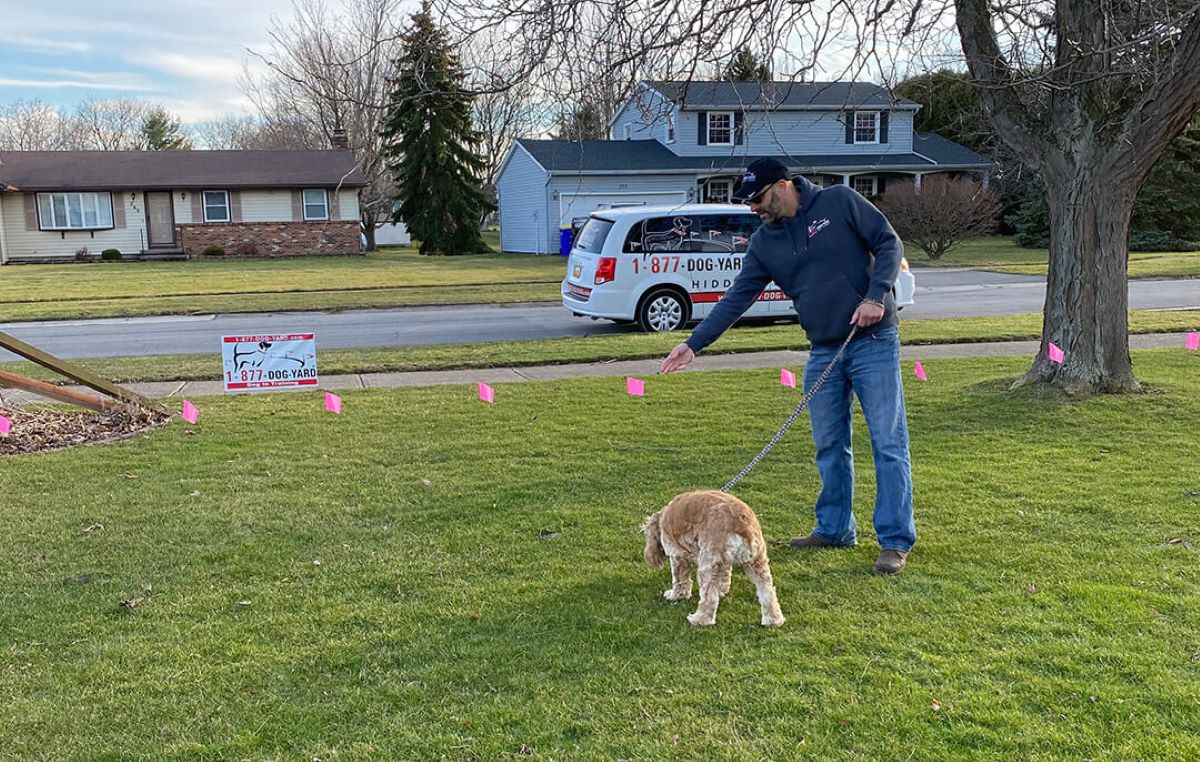
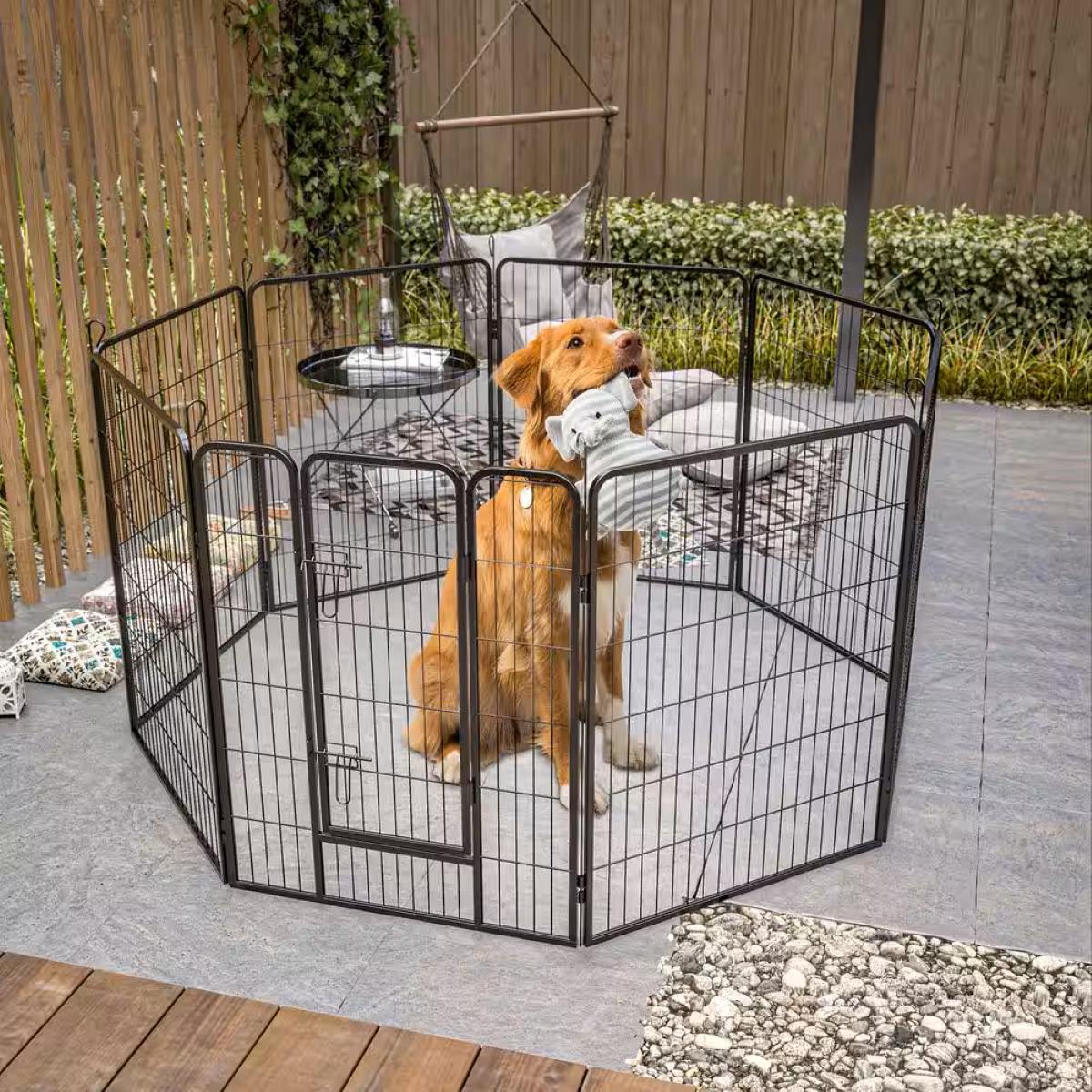
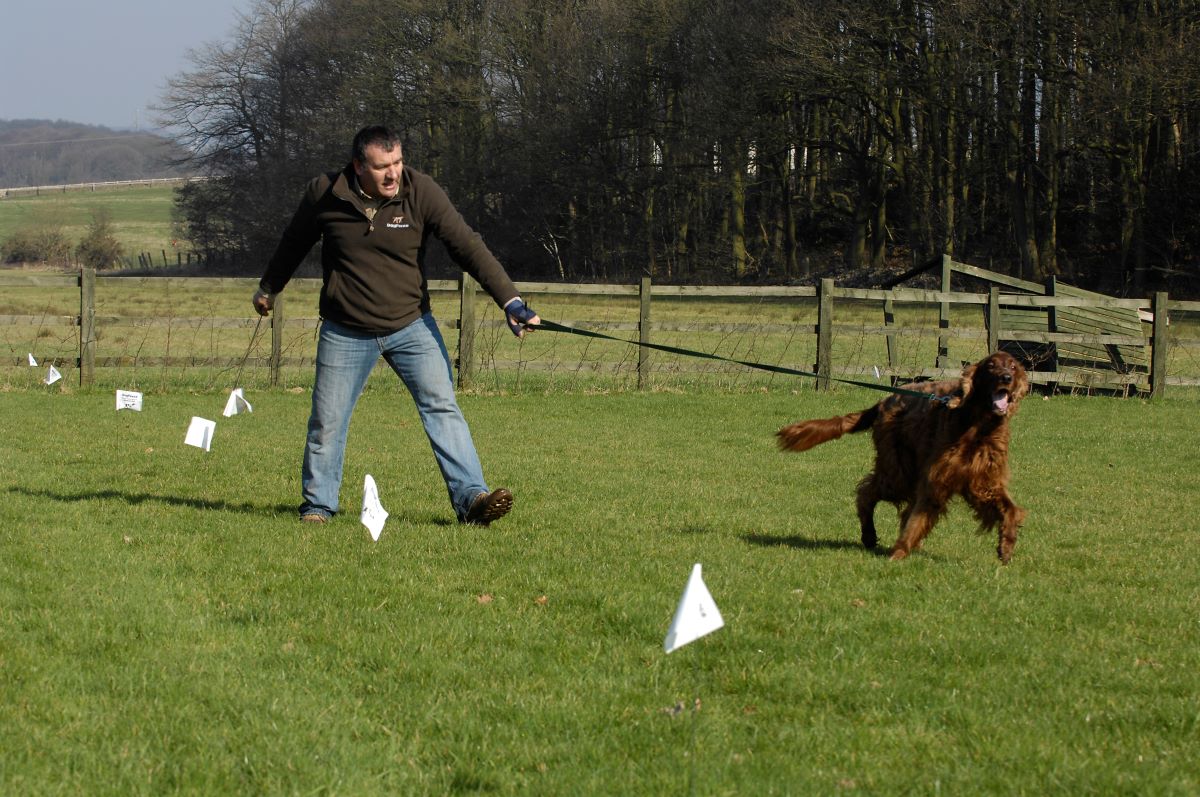
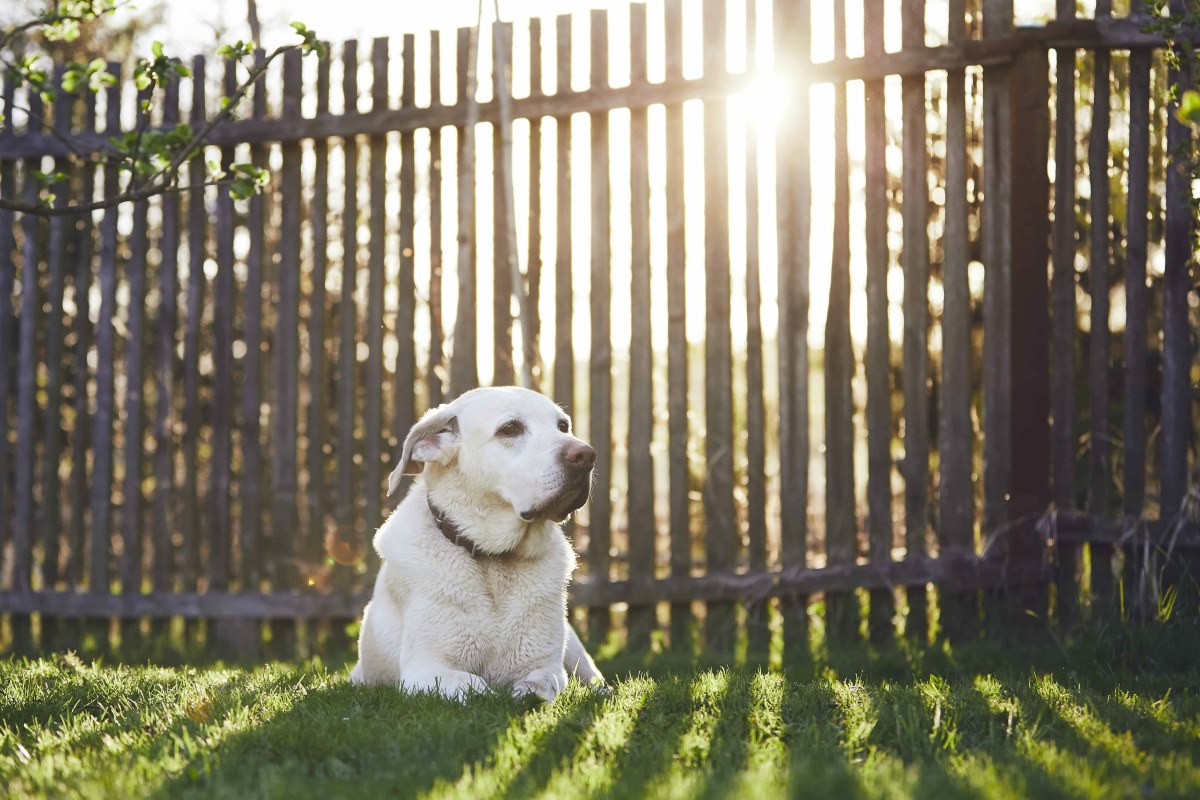
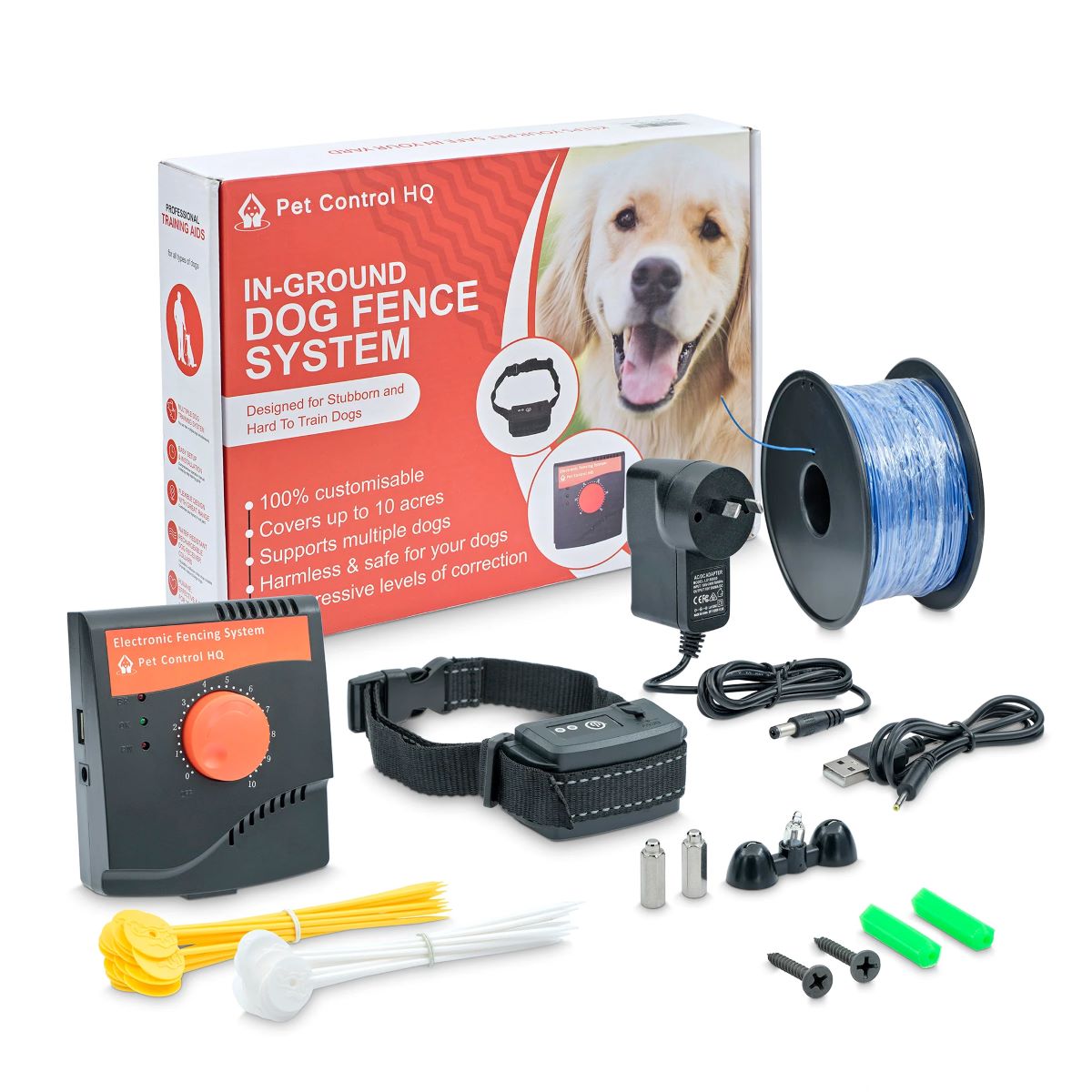
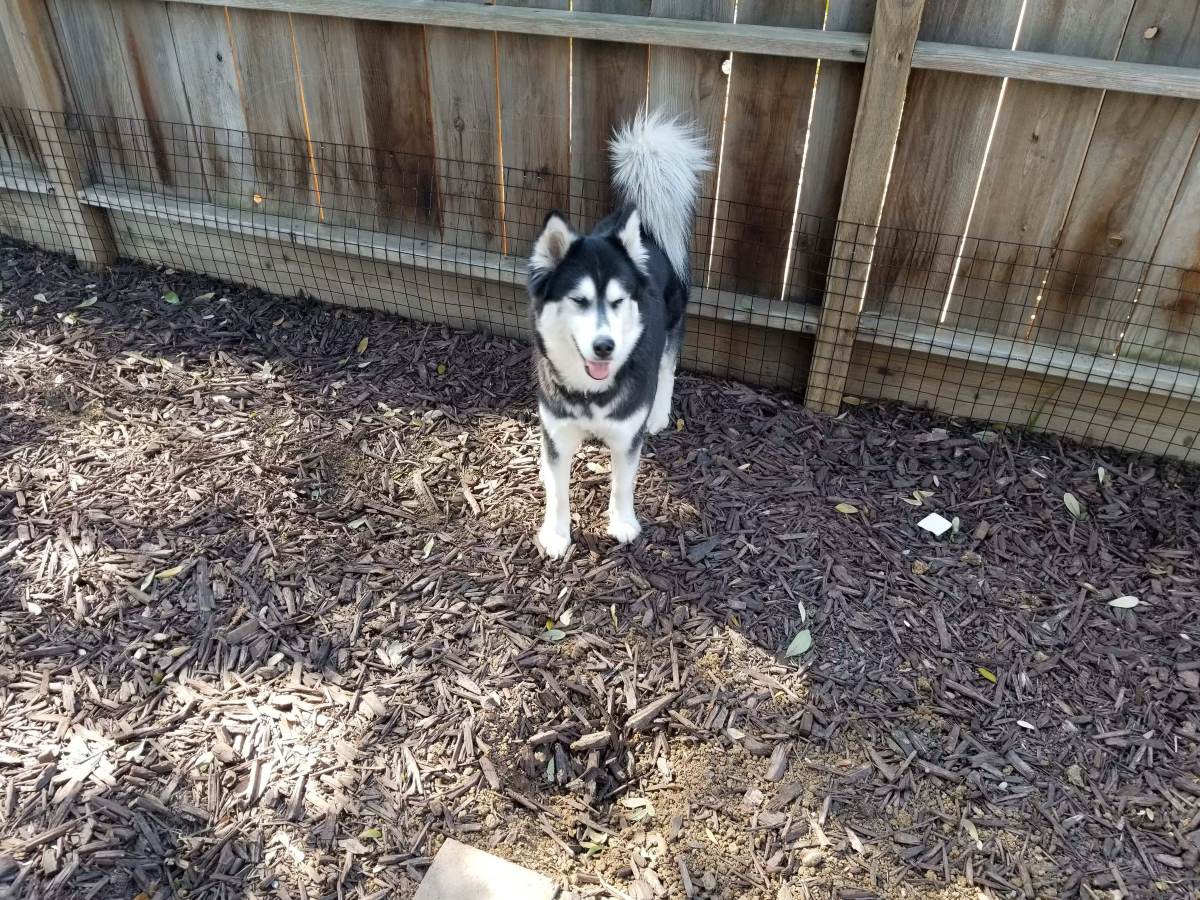
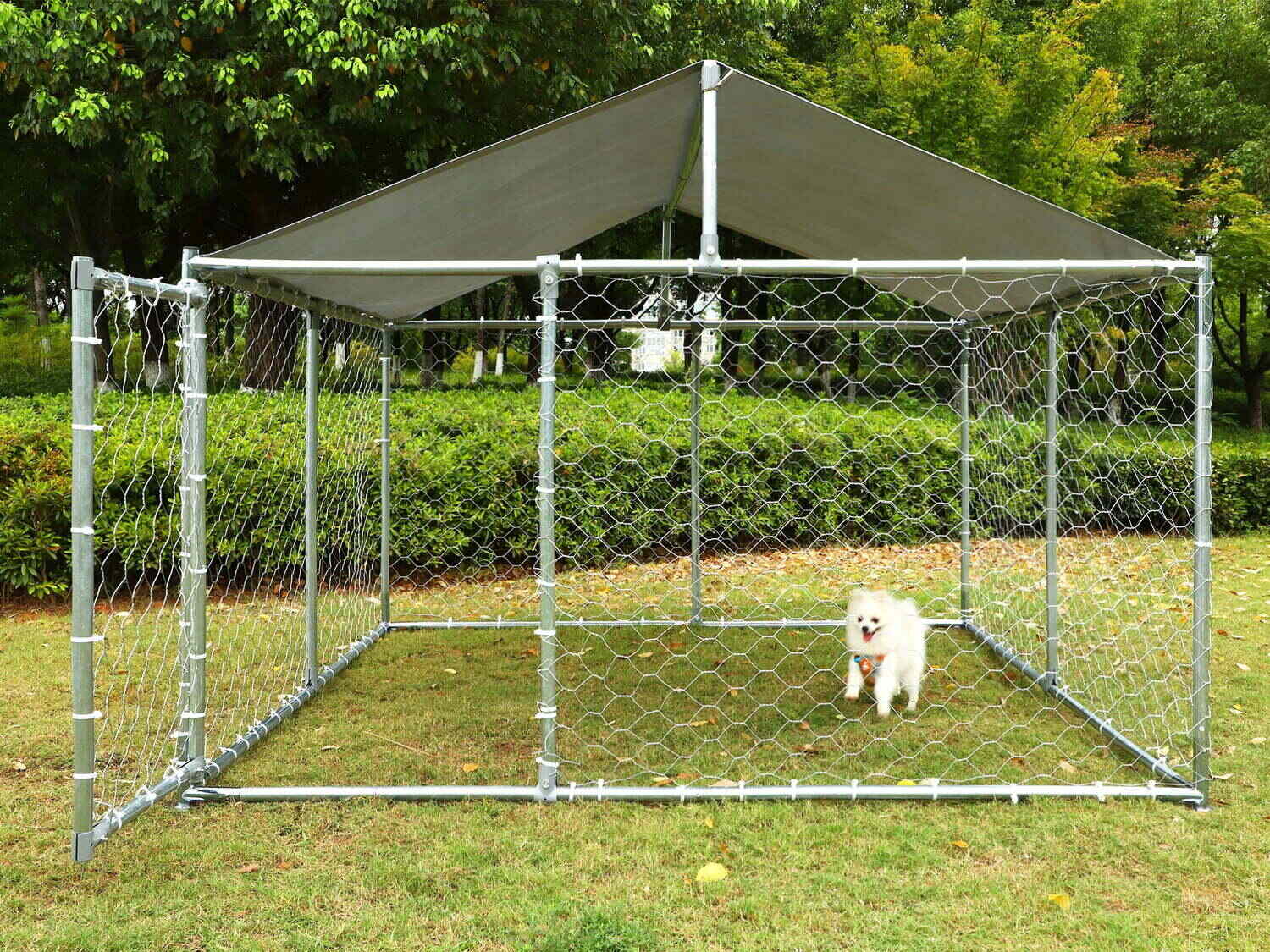
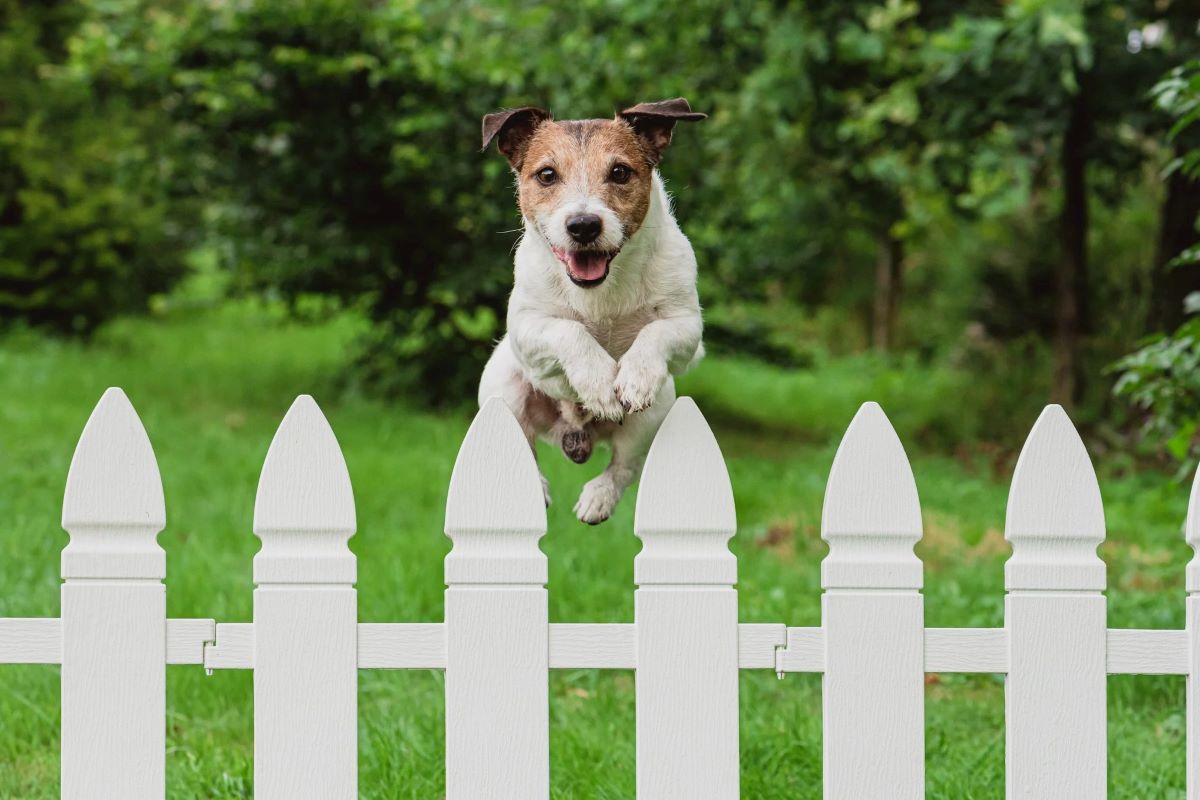
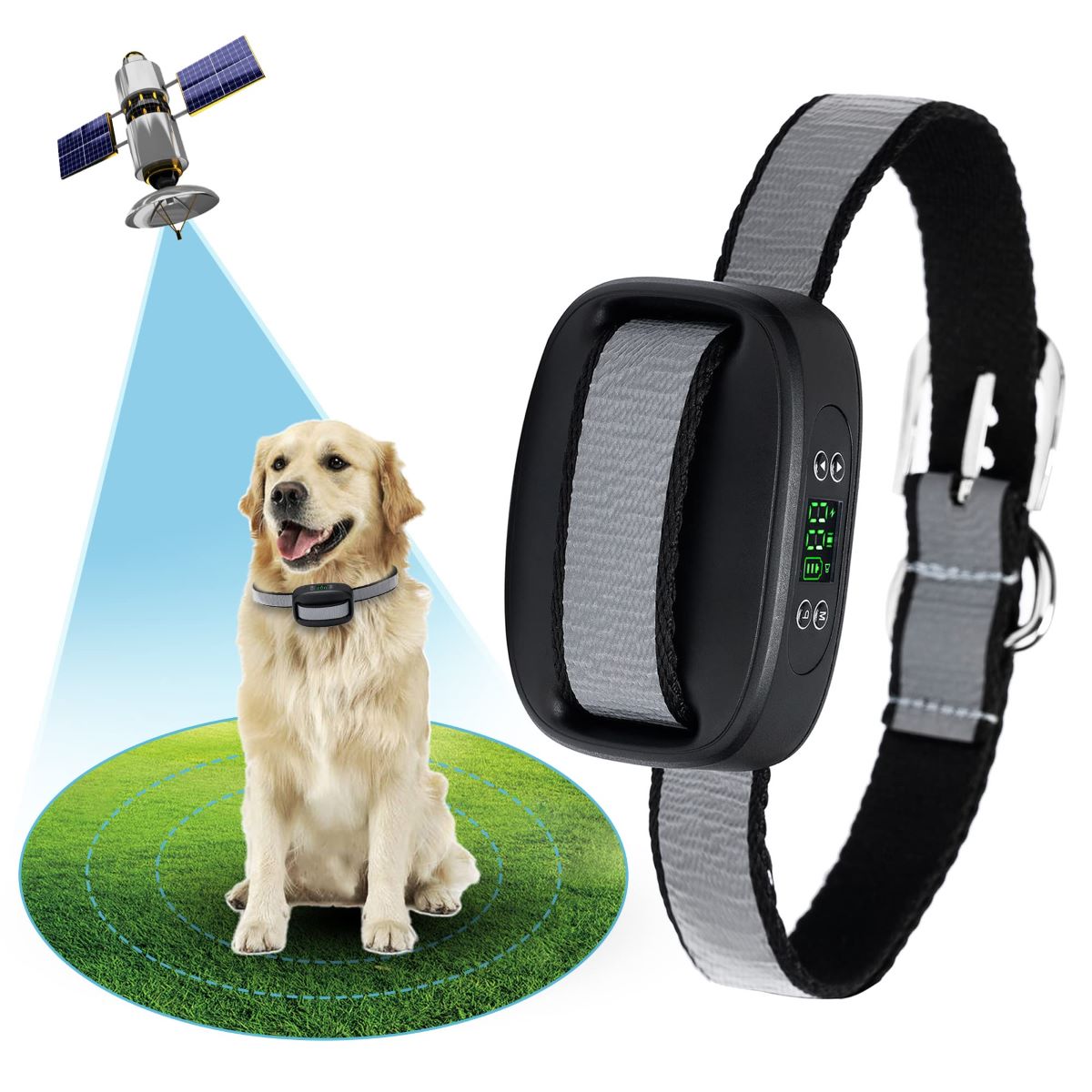
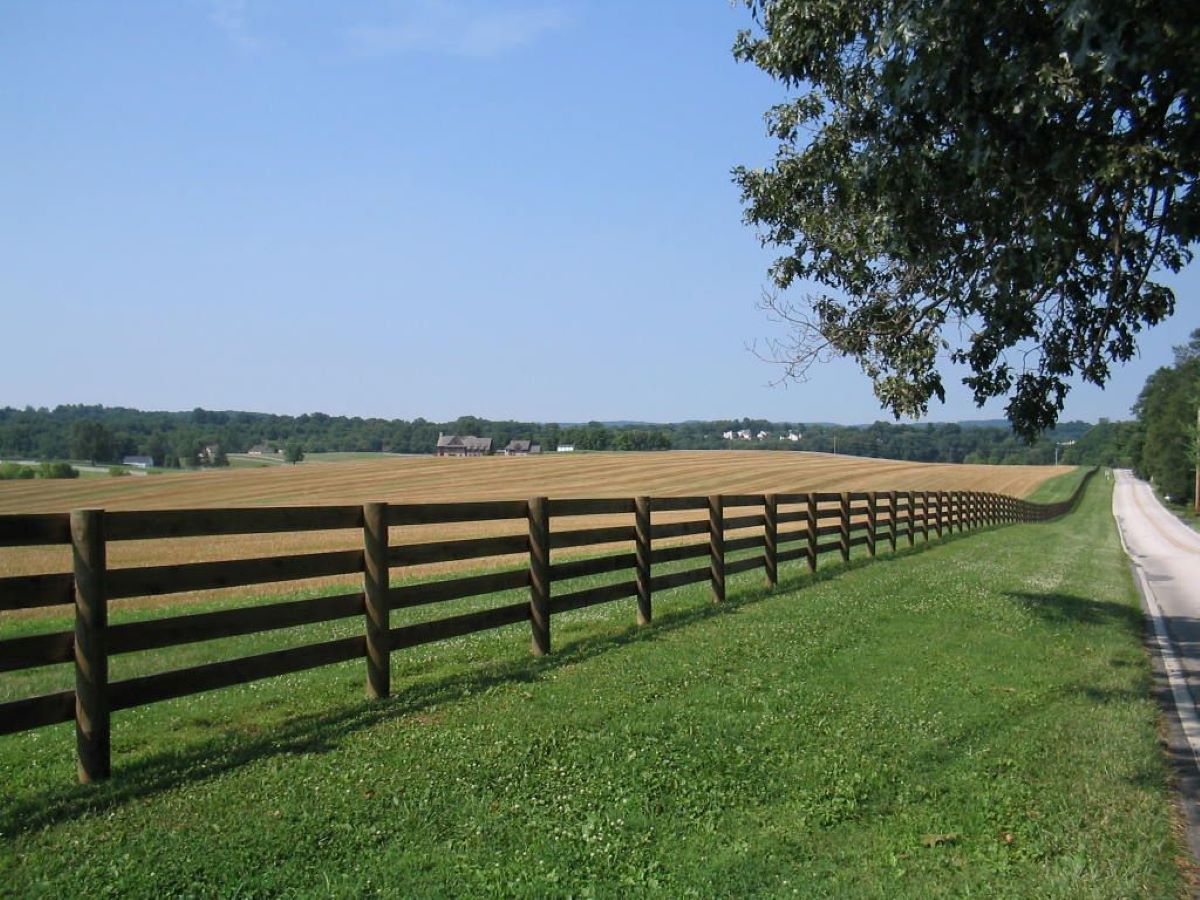
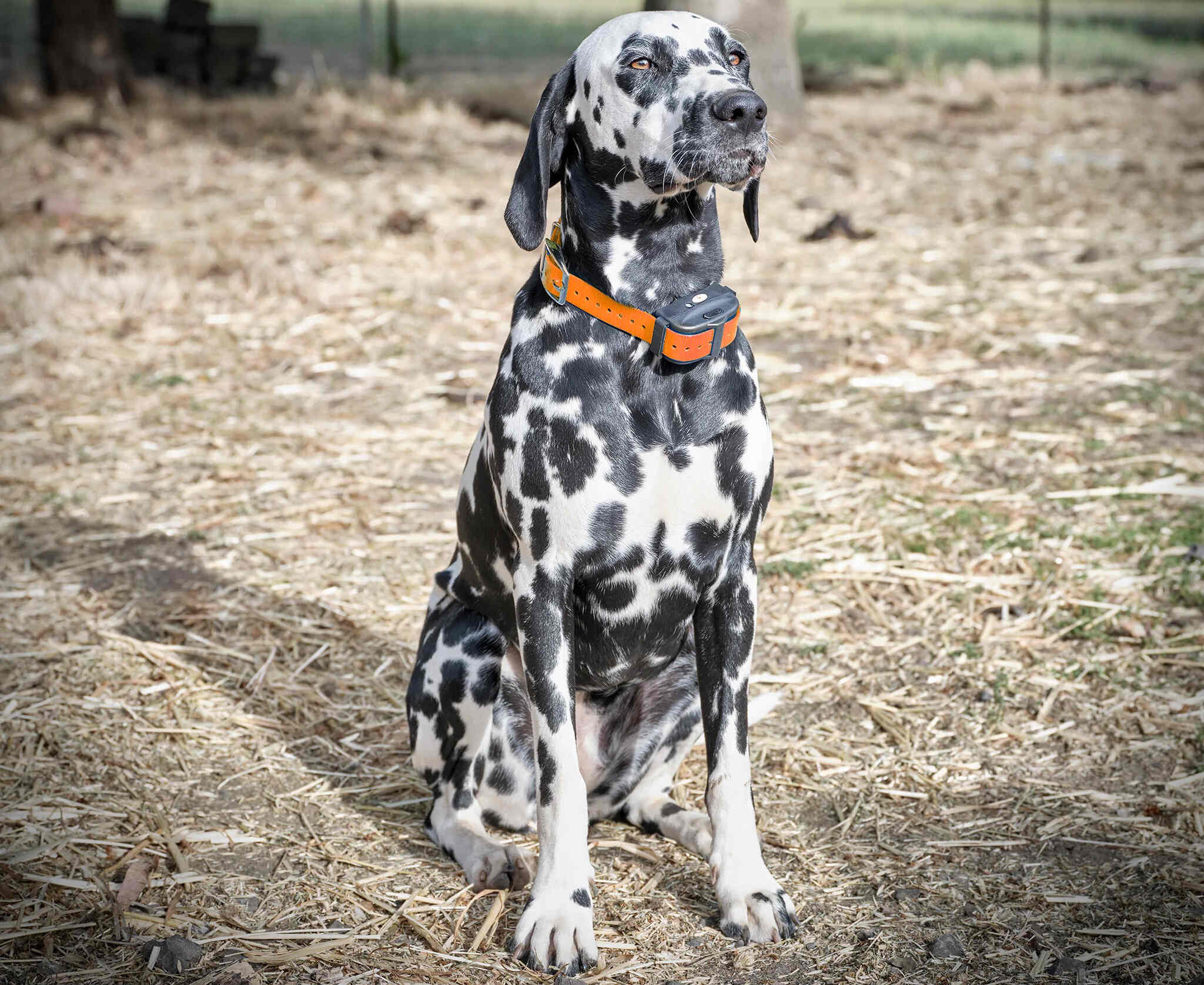
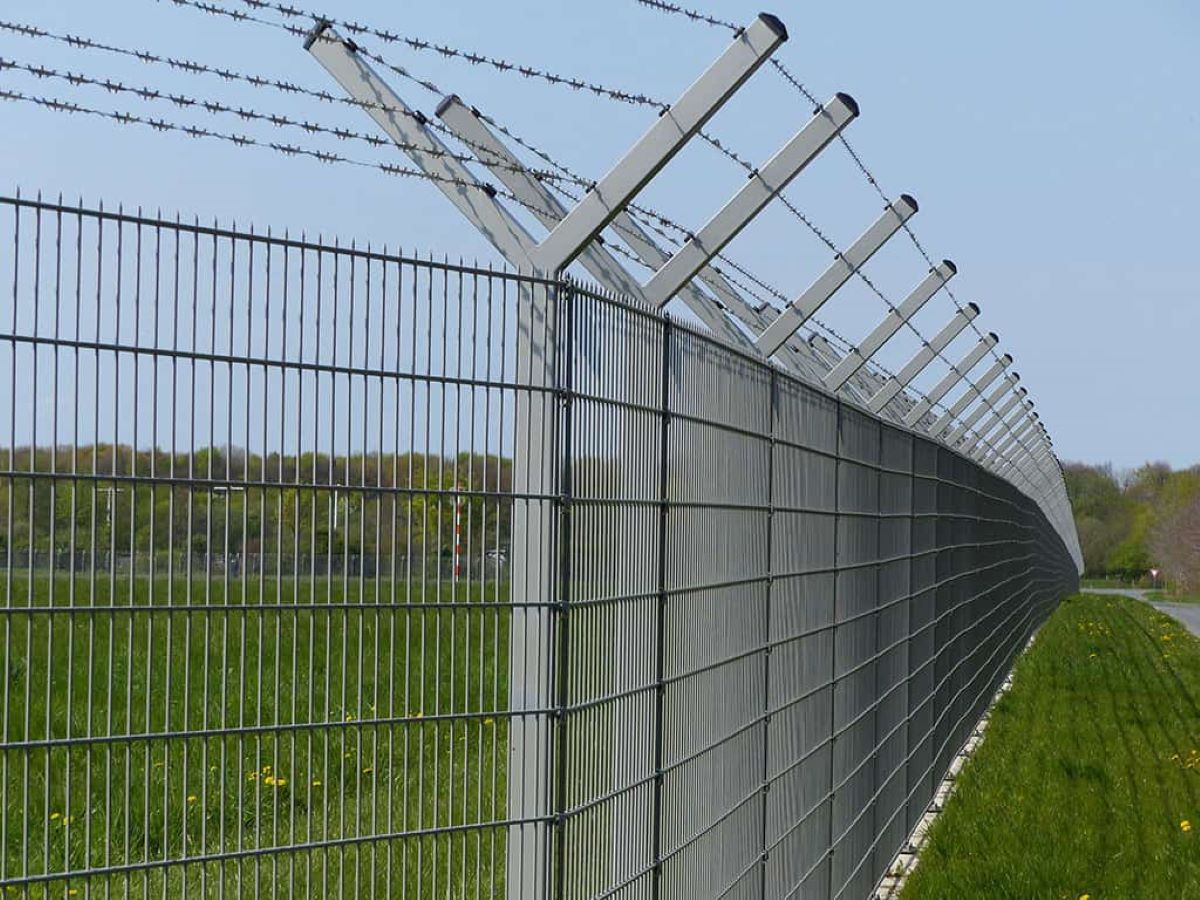
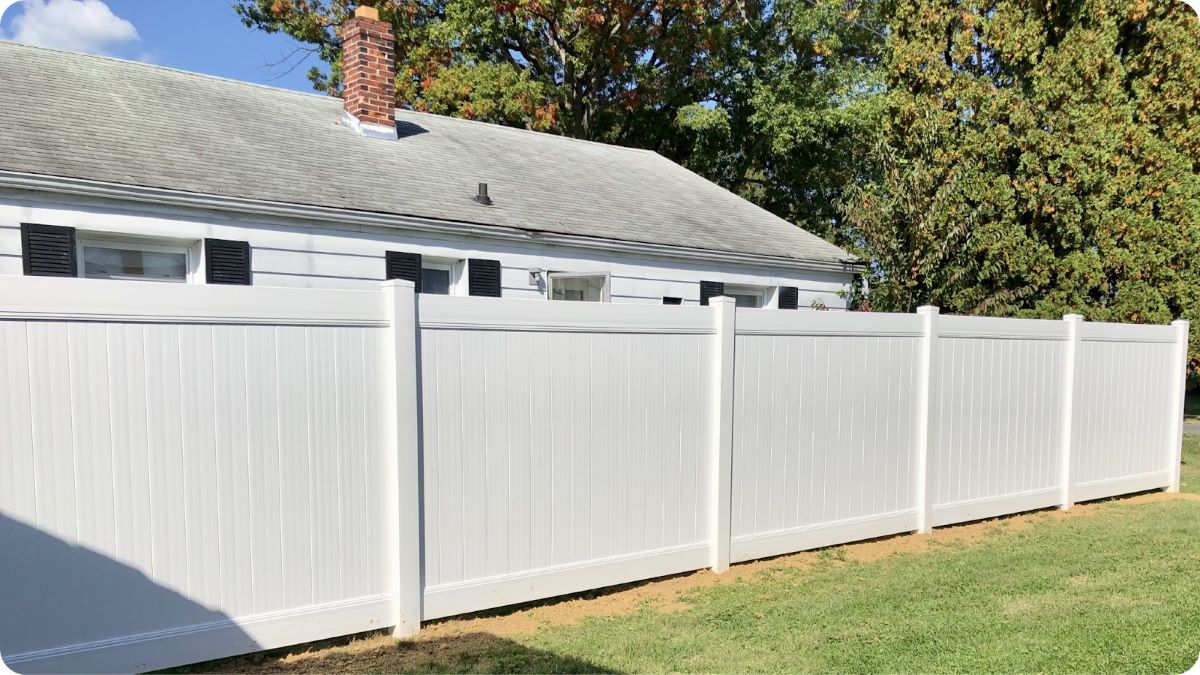

0 thoughts on “What Is A Dog Ear Fence”